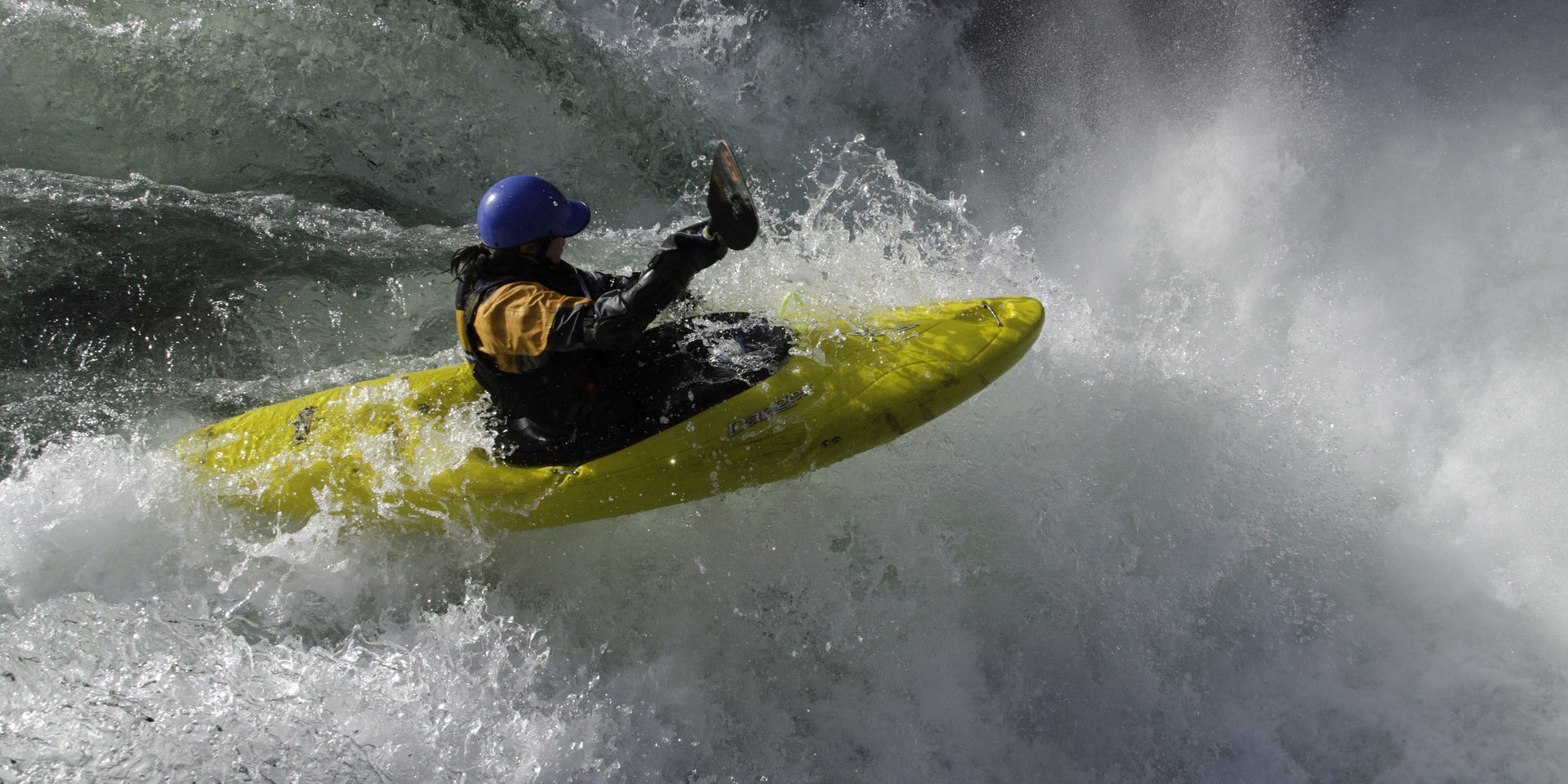You are here
This gem of a river exists for the delight of every aspiring Class V kayaker in the Portland area. Canyon Creek offers whitewater kayakers and rafters a spectacular variety of technical rapids, ledges and waterfalls throughout the 3.2-mile run. Decent sized pools follow most rapids, allowing time for recovery and general appreciation of the rapid you’ve just run. Many paddlers test their skills here, opting to scout rapids and set safety to better refine their lines. As a whitewater destination, Canyon Creek is a favorite spot for both locals and visitors in the Pacific Northwest.
The run begins with a short warm-up before the canyon walls constrict into the first gorge, the feature that gives the creek its name. At low to medium flows, slower water allows kayakers to catch more eddies and scout their way through these first rapids that are made up of ledge holes and constrictions. Higher water covers rocks that get in the way at low flows, however, and it links rapids together as it quickens the pace of the run. Waterfalls from smaller creeks tumble into the river as massive logs sit perched on the rocky outcrops waiting for the next major flood.
After several distinct ledges, each with a decent potential for recirculation, the river flows into a boulder garden that shifts a bit with each high water event. Further down, big Kahuna Falls channels the entire river’s flow over a 20-foot punchbowl style falls. Shortly after Big Kahuna, kayakers can link two more falls together, known as Champagne and Hammering Spot, before launching over the ski-jump style rock in Toby’s rapid. As if landing on a celebratory stroke, the river quickly disappears beneath the Lake Merlin reservoir. From here, paddlers recount their best (and worst) lines through Canyon Creek’s beloved rapids as they make their way across the half-mile flatwater paddle out.
A brief discussion of some of the notable rapids and hazards on this run follows, but please consult a river map for specific locations and information.
- Logs: Canyon Creek can get completely obstructed by massive log jams. Every year the situation changes. Check local forums or at local paddling shops - Alder Creek Canoe & Kayak or Next Adventure - to learn the current wood hazards.
- Terminator Rapid: At the end of the first gorge, the river pushes to the left, requiring paddlers to ramp onto a pillow off the left wall and boof back toward the center of the river.
- Two ledge holes, Prelude and Thrasher: Scout and hold a rope if necessary.
- Whoop-de-doop: Longer boulder garden leading into a steeper ledge.
- Big Kahuna Falls: 20-foot punchbowl style falls requiring a late boof but with undercut rocks on either side of the landing.
- Champagne Falls and Hammering Spot: Two 10-15 foot drops with prominent knuckles to boof. Safety is nice at the second.
- Toby’s: The final ski-jump style move, or ledge boof.
Logistics + Planning
Current Weather: Powered by Dark Sky






























Comments
Sign In and share them.